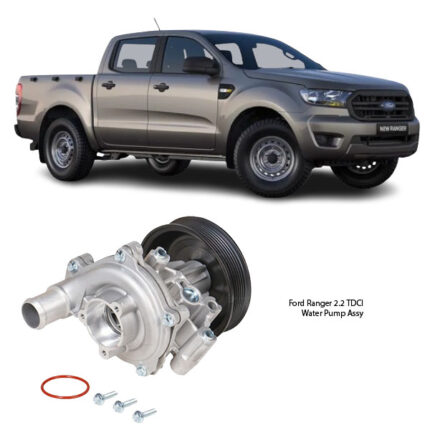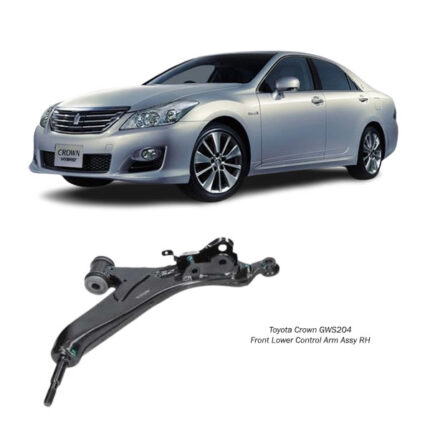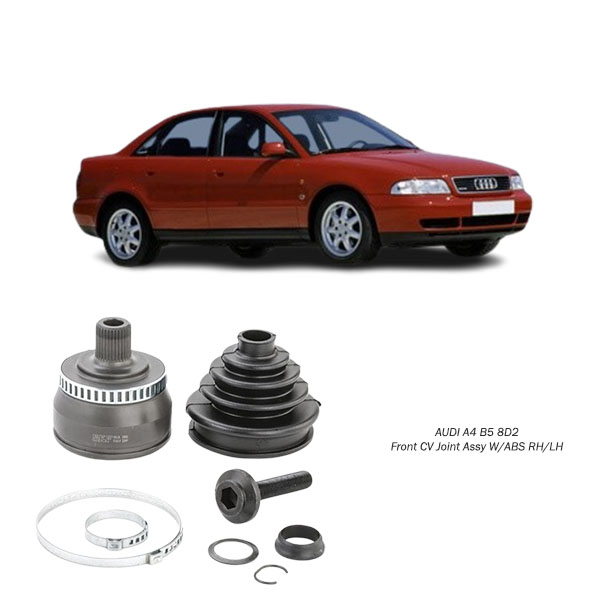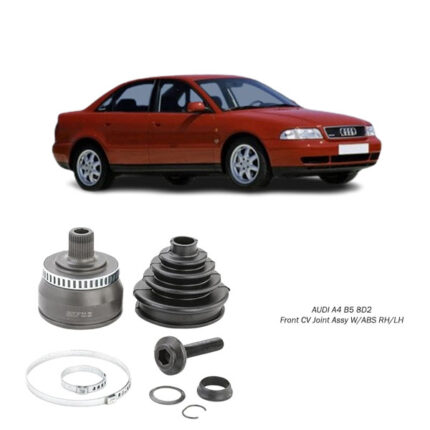-13%
Get AUDI A4 B5 8D2 Front CV Joint Assy W/ABS RH/LH 8D0498099B in Kenya
The Front CV Joint Assembly with ABS (RH/LH) is a vital part of a vehicle’s drivetrain, especially in front-wheel drive and all-wheel drive systems. It enables consistent power delivery from the transmission to the wheels while allowing for smooth movement over varying road conditions, angles, and suspension travel. Coupled with ABS (Anti-lock Braking System) compatibility, this component plays a critical role not just in propulsion, but also in the precision and reliability of your vehicle’s braking system.
Whether you’re a mechanic, parts dealer, or car owner looking to understand or replace this assembly, it’s crucial to know what it is, what it does, its benefits, the dangers of using a faulty one, signs of wear, and how to replace it effectively.
What is a Front CV Joint Assembly with ABS (RH/LH)?
A CV (Constant Velocity) Joint Assembly consists of:
-
The CV shaft (also known as a drive shaft or axle shaft)
-
Inner and outer CV joints
-
CV boots to protect the joints
-
Grease inside the boots for lubrication
-
Tone ring (or reluctor ring) for ABS sensor communication
The assembly connects the transmission to the wheel hub on either the right-hand (RH) or left-hand (LH) side. Its unique design allows it to maintain constant rotational velocity regardless of the angle, which is essential for steering and suspension movement.
The ABS functionality comes from the integrated tone ring, which works with a wheel speed sensor to monitor the rotational speed of the wheels. This information is critical for anti-lock braking and vehicle stability systems.
Function and Operation
The front CV joint assembly with ABS serves two primary purposes:
-
Transmit Power Efficiently:
It transfers engine torque from the transmission to the wheels while accommodating up and down movement due to bumps, as well as inwards and outwards motion from turning. -
Support ABS Monitoring:
The built-in tone ring provides real-time wheel speed data to the ABS control unit, ensuring optimized braking and stability control during emergency stops or slippery conditions.
This combined design allows the vehicle to handle corners, potholes, and uneven terrain without interrupting power flow or braking safety.
Advantages of a Good Front CV Joint Assembly with ABS
A high-quality CV joint assembly offers several critical benefits:
1. Smooth Power Delivery
– The CV joints keep torque delivery consistent even when the wheels are turning or the suspension is moving up and down.
2. Enhanced Braking Safety
– The ABS tone ring allows accurate monitoring of wheel speeds, preventing wheel lock-up and skidding.
3. Improved Handling
– Precise wheel control translates to more stable handling, particularly on rough or curved roads.
4. Longer Lifespan
– Proper sealing and lubrication prevent wear and extend the life of the joint and surrounding components.
5. Reduced Vibration
– A good CV joint minimizes shuddering or vibration during acceleration, ensuring a smoother ride.
Disadvantages of a Worn or Damaged CV Joint Assembly
Neglecting a worn CV joint can lead to multiple performance and safety issues:
1. Loss of Drive Power
– A completely failed CV joint can disconnect power flow to the wheel, rendering the vehicle undrivable.
2. ABS Malfunction
– A damaged tone ring or CV joint can cause the ABS warning light to illuminate and disable the anti-lock braking system.
3. Vibrations and Noise
– Clicking noises when turning or vibrations while accelerating are common symptoms of joint failure.
4. Grease Leakage
– Torn CV boots allow grease to leak out and contaminants to get in, leading to joint wear.
5. Increased Risk of Accidents
– A failed CV joint can lead to erratic steering, loss of control, or brake inefficiency under certain conditions.
Common Signs of a Failing Front CV Joint Assembly
If you’re experiencing issues with your drivetrain, steering, or brakes, it could be due to a failing CV joint. Watch for these signs:
-
Clicking or popping noises while turning, especially under acceleration
-
Grease splatter around the wheel well (a torn boot is likely)
-
Vibration during acceleration or while maintaining high speeds
-
Knocking sound while driving over bumps
-
ABS warning light illuminated on the dashboard
-
Uneven or excessive front tire wear
-
Reduced braking efficiency, especially during emergency stops
How to Replace a Front CV Joint Assembly with ABS (RH/LH)
Replacing a CV joint assembly can be a complex but manageable task if you have the right tools and mechanical knowledge.
Tools and Equipment Needed:
-
Jack and jack stands
-
Lug wrench
-
Socket and ratchet set
-
Pry bar
-
Torque wrench
-
CV joint puller or slide hammer (optional)
-
Replacement CV joint assembly
-
CV axle nut socket
-
Hammer or mallet
-
ABS sensor cleaner (if needed)
Replacement Steps:
-
Prepare the Vehicle:
-
Park on a level surface, engage the parking brake, and loosen the lug nuts.
-
-
Lift and Secure:
-
Raise the vehicle and support it on jack stands. Remove the front wheel on the affected side.
-
-
Remove Axle Nut:
-
Use a breaker bar to loosen and remove the axle nut holding the CV shaft to the wheel hub.
-
-
Detach Steering and Suspension Components:
-
Remove any bolts connecting the strut, ball joint, or control arm as needed to free the axle from the hub.
-
-
Separate CV Joint from Transmission:
-
Use a pry bar to gently pop the inner CV joint out of the transaxle or differential.
-
-
Remove the Old Assembly:
-
Carefully slide the old CV joint out. Take care not to damage the transmission seal.
-
-
Install New Assembly:
-
Align and insert the new CV shaft into the transmission. You may hear a click when it seats properly.
-
-
Reconnect Suspension:
-
Reinsert the shaft into the hub. Reconnect all previously removed components.
-
-
Torque All Fasteners:
-
Use a torque wrench to tighten the axle nut and suspension bolts to manufacturer specs.
-
-
Reinstall Wheel:
-
Put the wheel back on and torque the lug nuts correctly.
-
Test Drive:
-
Take a short test drive to ensure no noise, vibration, or ABS errors appear.
Follow us on Facebook for more parts.





Reviews
Clear filtersThere are no reviews yet.